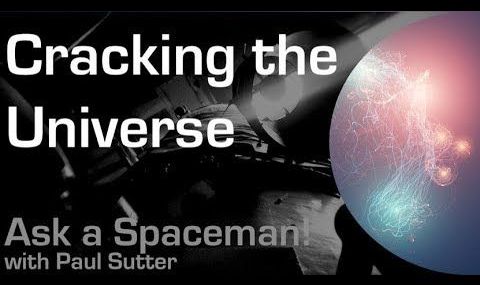Our universe may be riddled with defects in space-time known as cosmic strings. Though we don’t have any evidence yet that they exist, they may still be out there, and I promise that you really don’t want to encounter one.

Our universe may be riddled with defects in space-time known as cosmic strings. Though we don’t have any evidence yet that they exist, they may still be out there, and I promise that you really don’t want to encounter one.
The Gates Foundation is partnering with the National Institutes of Health to bring gene-based cures to countries in Africa were HIV and sickle cell disease are the most prevalent.
Alzheimer’s and diabetes could be connected in ways we’re only beginning to identify, say scientists presenting the latest research on links between blood sugar metabolism and dementia.
The atmosphere is fluid. This means it’s subject to fluid dynamics, such as circulation, currents, and, yes, gravity waves. The atmosphere is always in motion, so these phenomena happen all the time; but actually seeing them is another matter.
Well, thanks to weather satellites, now you can take a mighty gawk at atmospheric gravity waves that rippled out over Western Australia last week.
Not to be confused with gravitational waves, which are disturbances in the curvature of spacetime created by massive acceleration, gravity waves, also known as buoyancy waves, are a physical phenomenon where waves are generated in any fluid medium, such as waves at the beach, or ripples in a glass of water.
A failing pipe can be tough to spot. It may cause a puddle, produce another sign of damage, or simply burst before detection. A flooded kitchen or laundry room is messy and inconvenient, but the stakes are much, much higher in nuclear power plants—which on average contain many miles of pipeline.
As concern about aging plants escalates, Vanderbilt engineers are working on an early warning system. They are using polymer coatings on the inside of the pipe and 3D-printed polymer devices infused with nanoparticles as sensors to signal the changes on the outside of the pipe. And, they hope, sound.
A huge challenge is to detect the changes in the polymer film occurring inside the pipe. To create a useful and proactive technique, the team wants to use sound, or vibrometry, to identify these internal changes from outside the pipe.
New research from a team of Canadian scientists has for the first time demonstrated how exposure to Narrow Band Ultraviolet B light (UVB) can directly influence gut microbiome diversity in humans. The research hypothesizes that this result is modulated by vitamin D and presents evidence of a novel skin-gut communication pathway.
Autoimmune diseases such as inflammatory bowel disease (IBD) and multiple sclerosis are thought to be caused by a number of environmental and genetic factors. Gut bacterial diversity, exposure to sunlight and vitamin D levels, have all been observed as influential factors for inflammatory disease, however a new study is asserting a causal chain may link all three of these elements.
The new research examined 21 female subjects who were all administered three 60-second full-body UVB exposure sessions across one week. Blood and fecal samples were taken from all subjects at the beginning and end of the study to track changes to vitamin D levels and gut bacterial diversity. Half of the subjects were noted as having taken vitamin D supplements across the prior three winter months.
Such studies are distrusted by professionals because of possible conflicts of interest. But important research will be increasingly conducted, funded or aided by such firms.
The low cost of genetic testing has prompted a slew of Chinese companies, including 23Mofang and Shenzhen-based WeGene, to enter the market and tap growing demand in the world’s second largest economy, which is expected to reach US$4.3 billion by 2023. Compared to the US, China remains a fairly nascent market for direct-to-consumer genetic testing.
The low cost of direct-to-consumer genetic testing has prompted a slew of Chinese companies to enter the domestic market, which is expected to reach US$4.3 billion by 2023.